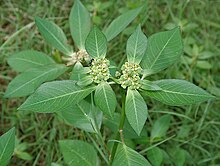| Superrosids Temporal range: | |
|---|---|
 | |
| Euphorbia heterophylla | |
| Scientific classification | |
| Kingdom: | Plantae |
| Clade: | Tracheophytes |
| Clade: | Angiosperms |
| Clade: | Eudicots |
| Clade: | Core eudicots |
| Clade: | Superrosids |
| Clades [1] | |
The superrosids are members of a large clade (monophyletic group) of flowering plants, containing more than 88,000 species, [2] and thus more than a quarter of all angiosperms. [3]
Contents
The clade is divided into 18 orders as defined in APG IV system. These orders, in turn, together comprise about 155 families. [1]
The name is based upon the name "Rosidae", which had usually been understood to be a subclass.
